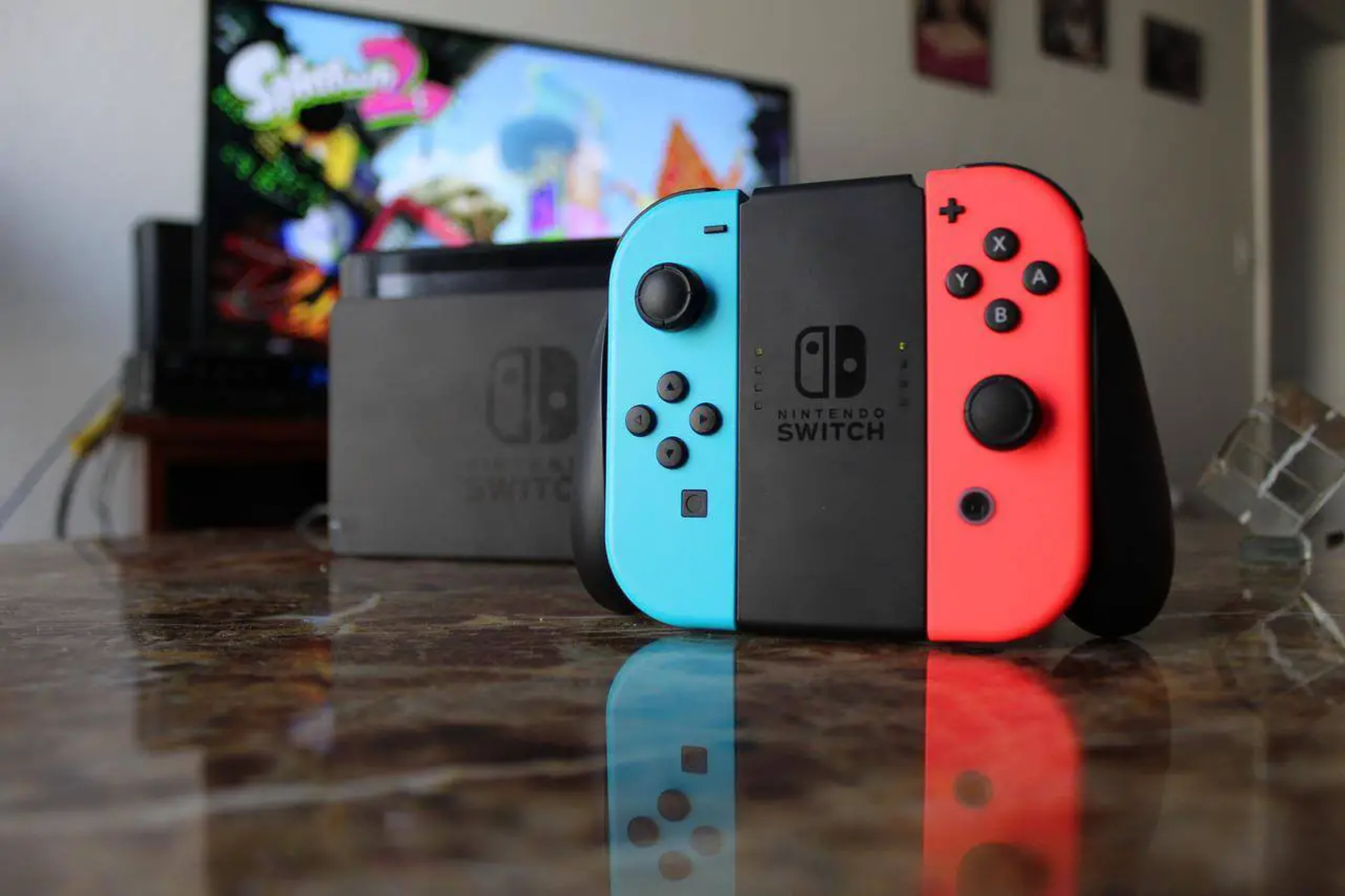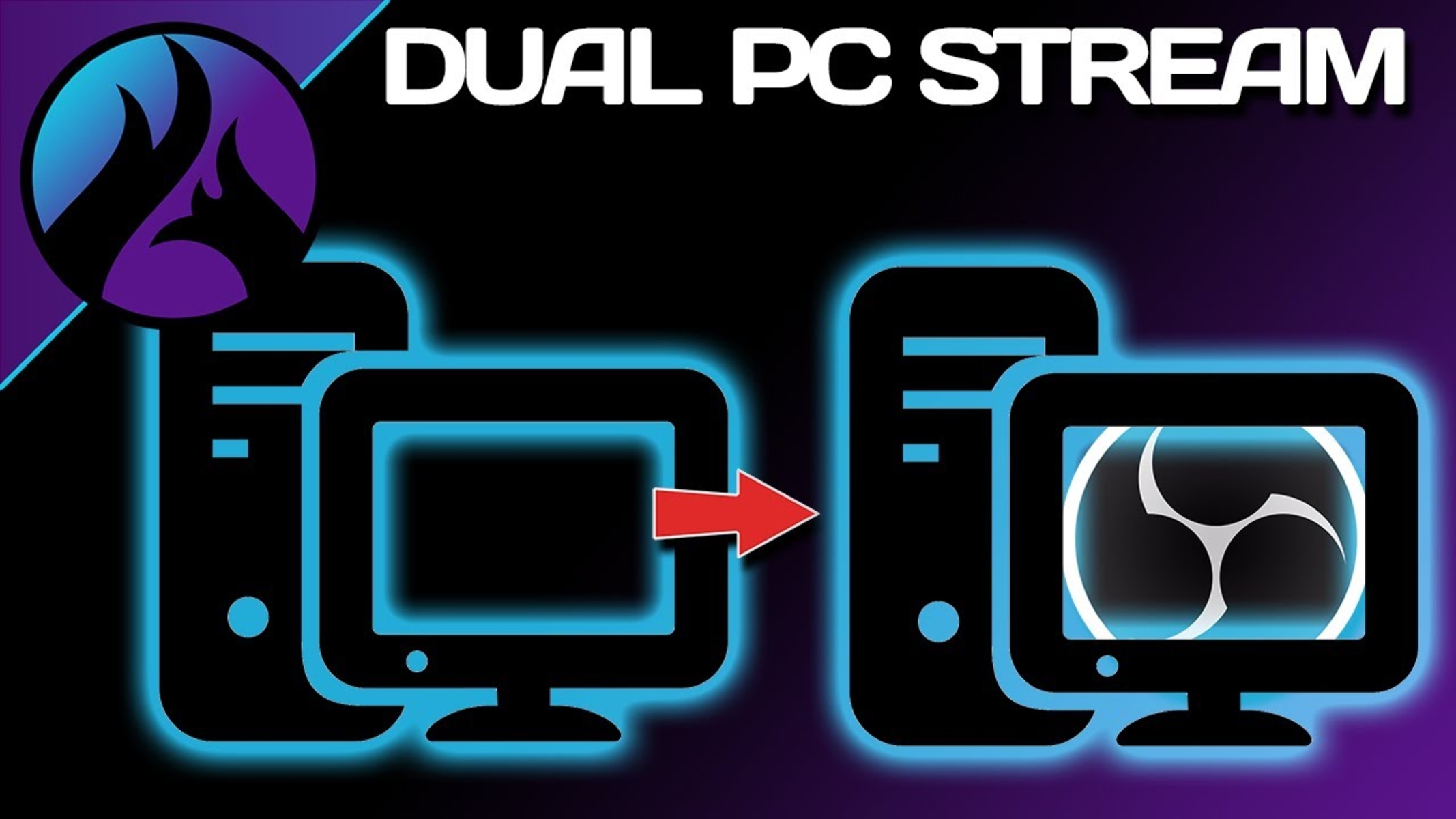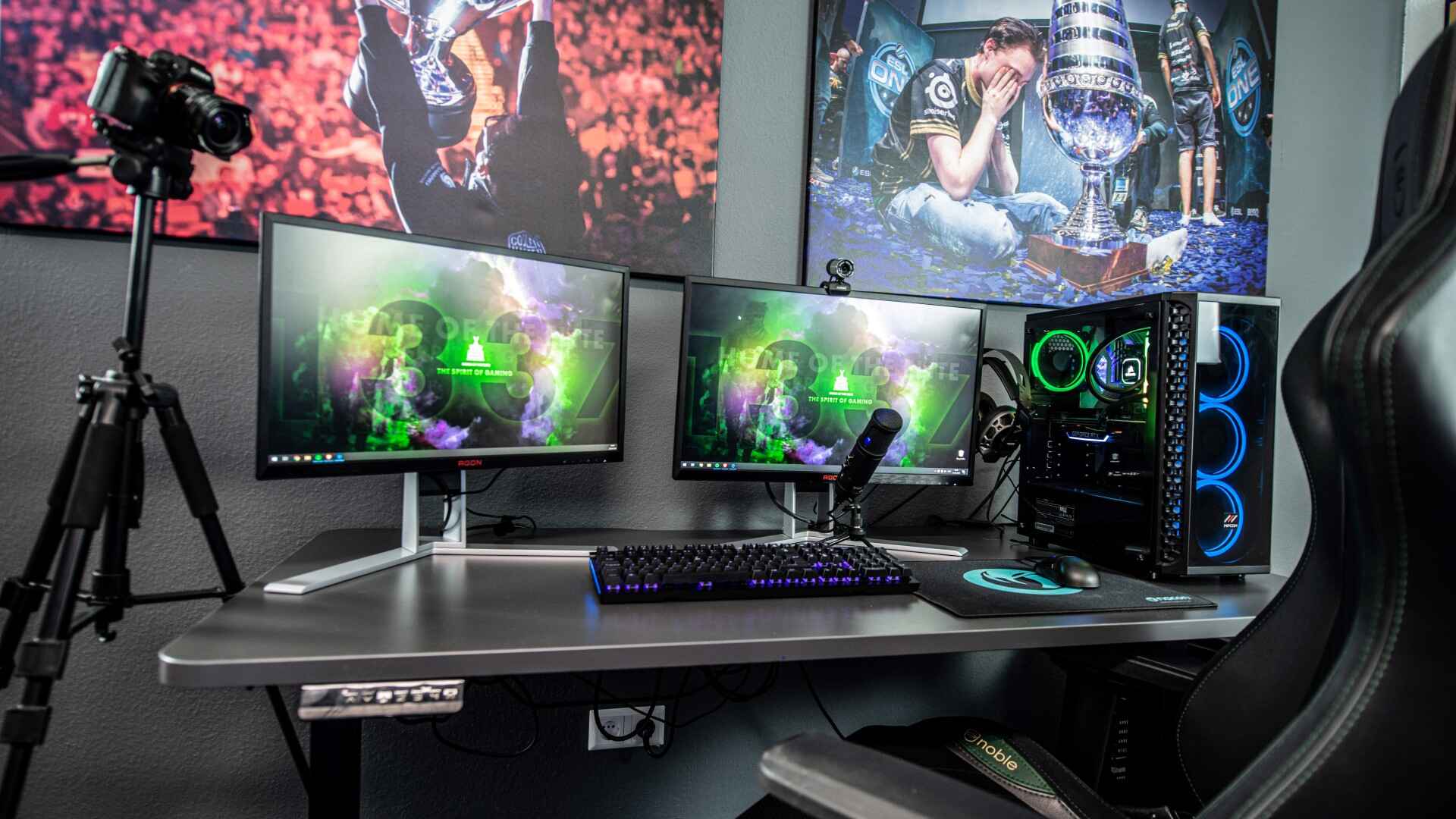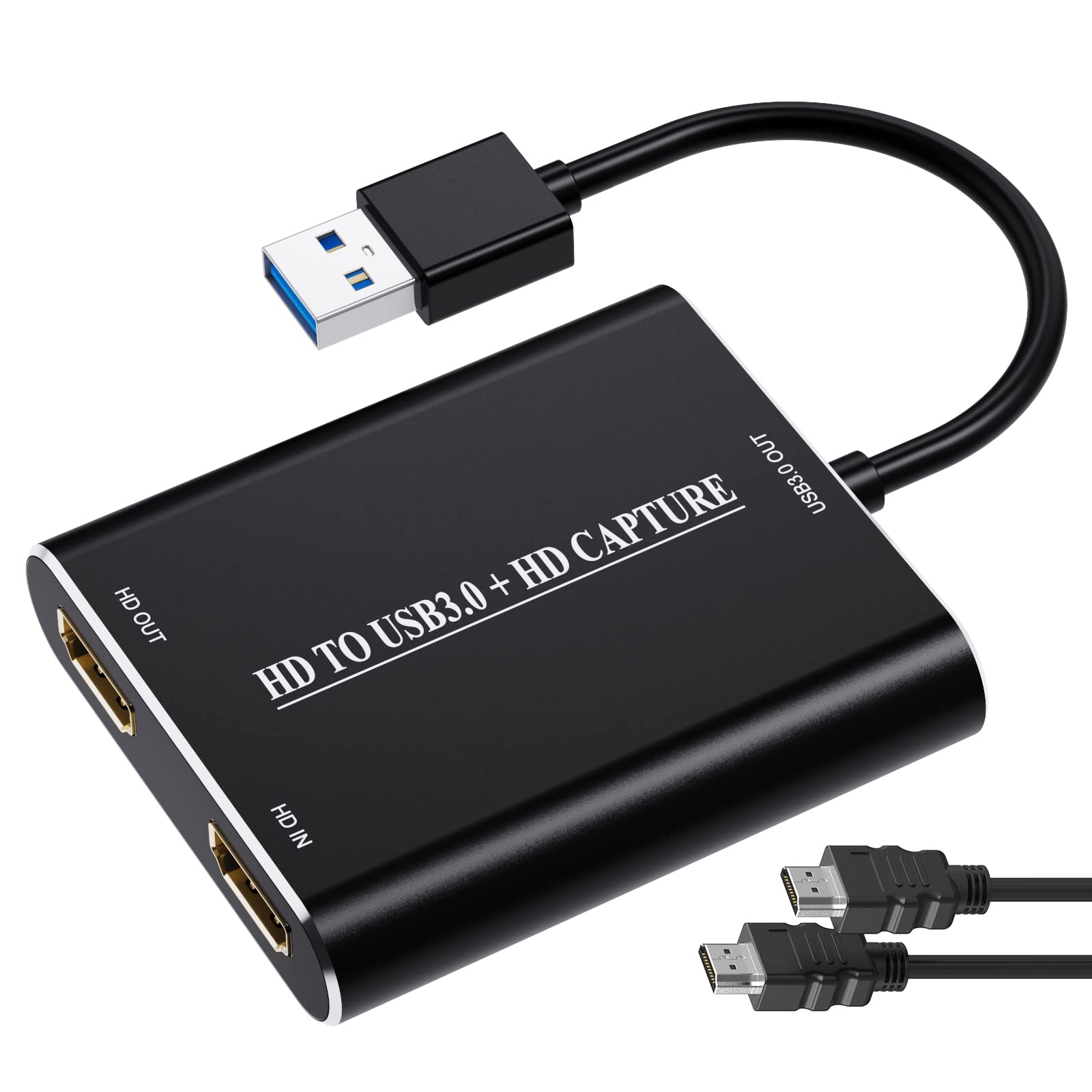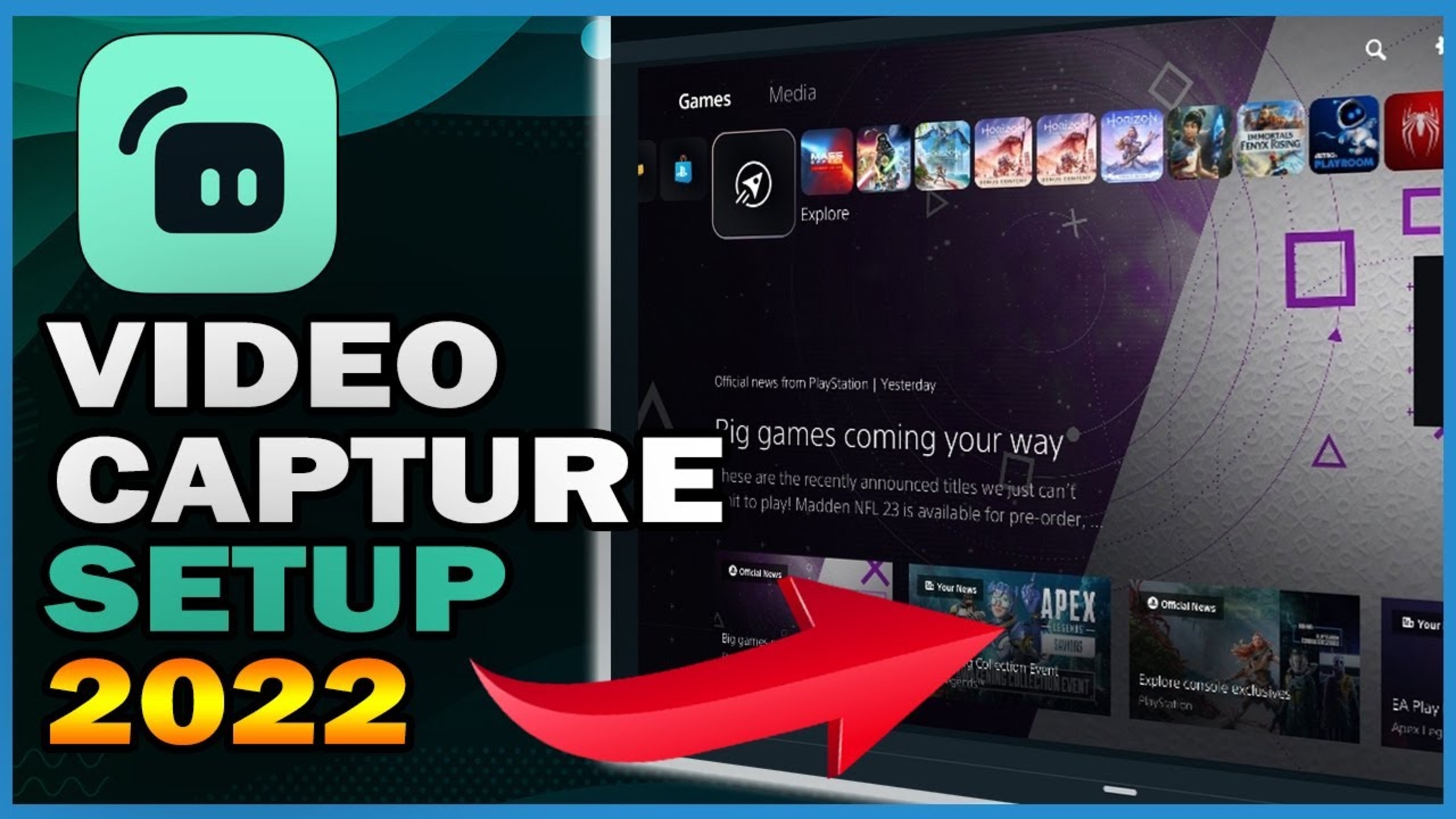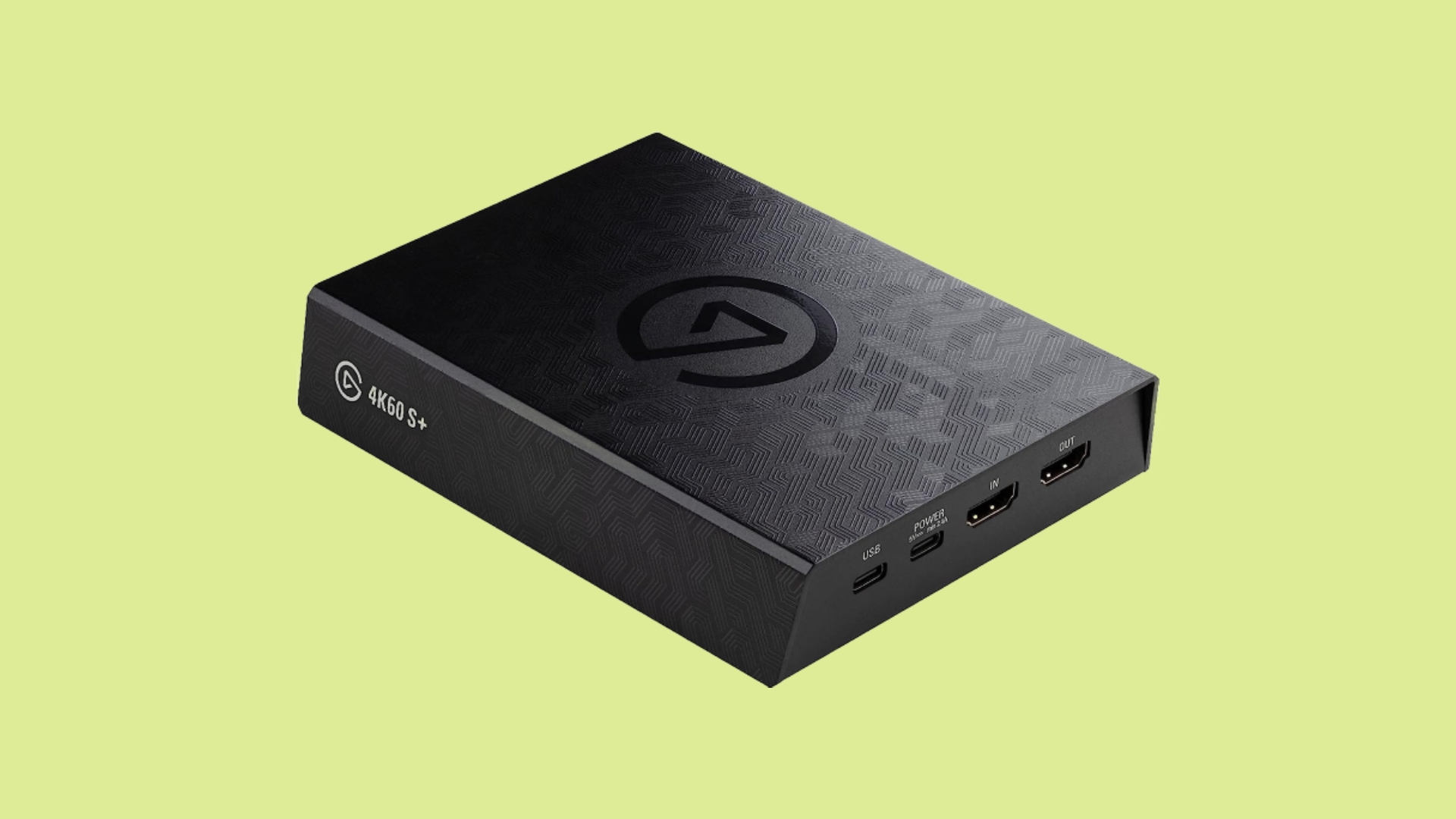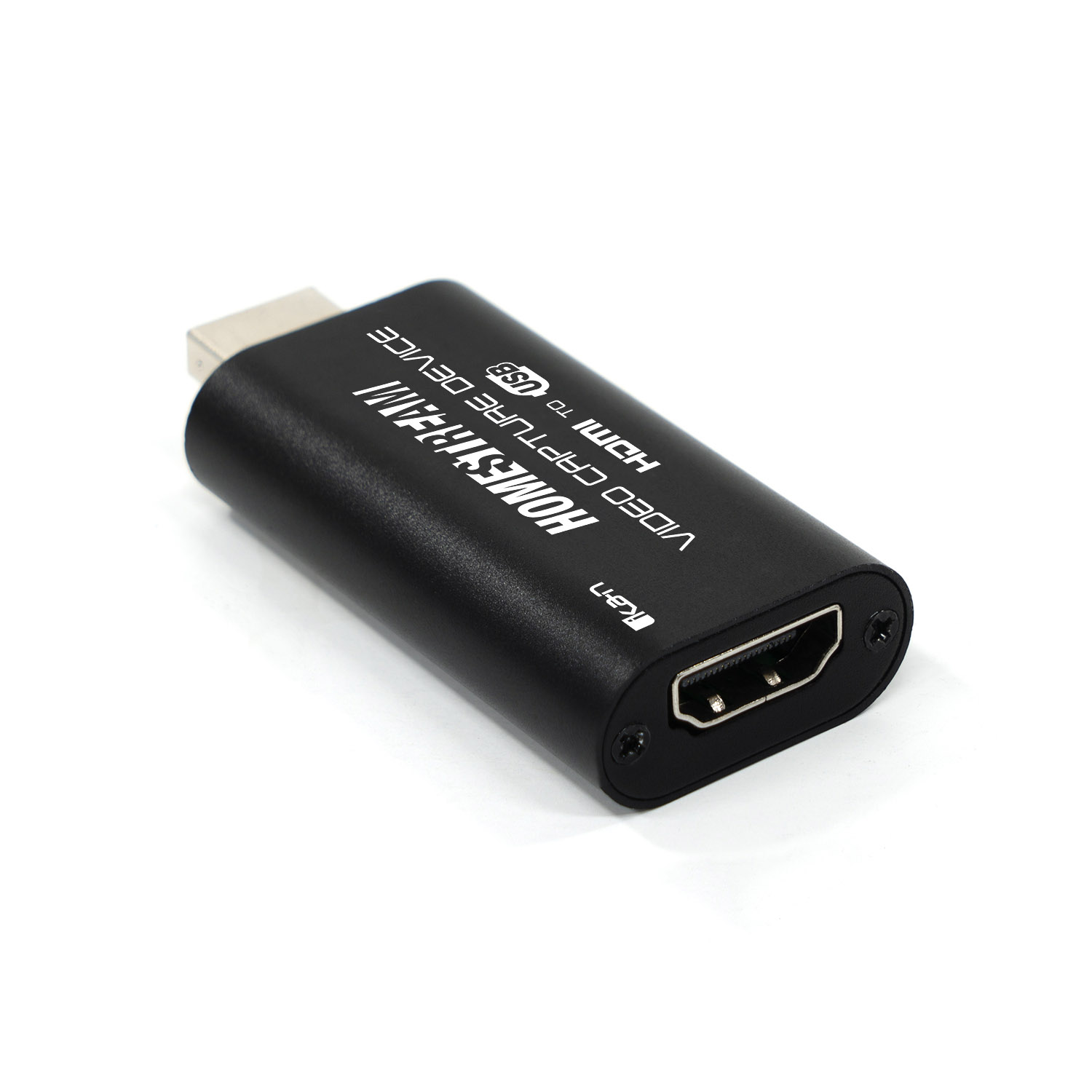Introduction
Streaming content has become incredibly popular in recent years, with platforms like Twitch and YouTube allowing people to share their gameplay, tutorials, and live events with a global audience. One of the most widely used streaming tools is OBS (Open Broadcaster Software), a free and open-source software that enables creators to capture, record, and broadcast their content.
When using OBS, one crucial consideration is the CPU (Central Processing Unit) usage. CPU usage directly impacts the performance and smoothness of your stream. If the CPU usage is too high, it can lead to dropped frames, stuttering video, and even system crashes. Therefore, it’s imperative to understand how to effectively manage and lower CPU usage in OBS to ensure a high-quality streaming experience for both streamers and viewers alike.
In this guide, we will discuss various techniques and settings adjustments that can help you optimize OBS and reduce CPU usage. By implementing these strategies, you’ll be able to maintain a stable stream without compromising on visual quality or performance. Whether you’re a seasoned streamer looking to improve your stream or a beginner just starting out, this guide will provide you with the necessary insights to keep your CPU usage under control.
Before diving into the optimization techniques, it’s essential to assess your current CPU usage. This will give you a baseline understanding of how OBS is currently impacting your system and allow you to measure the effectiveness of the changes you implement later on.
Now, let’s explore the various optimization methods that will help you turn down CPU usage on OBS and enhance your streaming experience.
What is OBS?
OBS (Open Broadcaster Software) is a powerful and popular software used for live streaming and recording. It is available for Windows, macOS, and Linux operating systems, making it accessible to a wide range of users. OBS is favored by both beginner and professional streamers due to its user-friendly interface, robust features, and customization options.
With OBS, streamers can capture their screen, audio, and video sources, and then upload their content to popular streaming platforms like Twitch, YouTube, or Facebook Live. Additionally, OBS provides various tools for scene composition, audio mixing, and visual effects, allowing streamers to create visually appealing and engaging streams.
OBS offers a range of features that make it an excellent choice for streamers. It supports multiple scene collections, allowing users to switch between different layouts or setups seamlessly. Additionally, OBS allows for real-time audio and video mixing, enabling streamers to add webcam footage, overlays, and transitions during their broadcasts.
Another notable feature of OBS is its flexibility and customizability. Users have the freedom to create their own layouts, add custom graphics and animations, and personalize their streaming experience. This level of customization ensures that streamers can maintain their unique brand and style while engaging with their audience.
One of the key advantages of OBS is that it is open-source software, meaning that its source code is available to the public. This encourages a community-driven approach, with users contributing to the software’s development and continuously improving its performance. Moreover, due to its open-source nature, OBS is free to use, making it accessible to streamers of all budgets and experience levels.
In summary, OBS is a highly versatile and powerful software that streamers rely on to deliver their content to a global audience. Its user-friendly interface, customization options, and robust feature set make it a popular choice among streamers worldwide.
Why is CPU usage important in OBS?
When using OBS for live streaming or recording, CPU usage plays a critical role in determining the performance and quality of your stream. The CPU (Central Processing Unit) is responsible for handling all the computational tasks needed to process video and audio data, encode it, and send it to the streaming platform or save it as a file.
High CPU usage can cause several issues that can negatively impact the stream’s quality and user experience. Here are some reasons why CPU usage is important in OBS:
1. Smoothness of the stream: If your CPU usage is too high, it can lead to dropped frames, causing the stream to appear choppy and inconsistent. High CPU usage can result in missed calculations and delays in encoding and transmitting data, leading to stuttering or lagging video for viewers.
2. System stability: Streaming and encoding video can be resource-intensive tasks, and when the CPU usage is too high, it puts a strain on your system. This can lead to system crashes, freezes, or general instability, impacting not only your stream but also other applications running on your computer.
3. Quality of the stream: OBS uses various encoding settings to compress video and audio data and transmit it efficiently over the internet. When the CPU usage is high, it may struggle to keep up with the required encoding tasks, leading to compression artifacts, pixelation, or a decrease in overall video quality.
4. Ability to use additional software or features: High CPU usage in OBS can limit your ability to run other software or add additional features to your stream. For example, if you want to incorporate chat overlays or integrate third-party applications while streaming, your CPU needs to have enough capacity to handle these tasks without impacting performance.
To ensure a smooth and high-quality streaming experience, it is vital to keep your CPU usage in check. Lowering CPU usage in OBS requires optimization of your OBS settings, adjusting video resolutions and frame rates, utilizing hardware encoding, and effectively managing sources and filters.
In the following sections, we will explore various techniques and strategies to reduce CPU usage in OBS without sacrificing the stream’s visual quality or performance.
Assessing your current CPU usage
Before implementing any optimizations or changes, it is essential to assess your current CPU usage in OBS. This will allow you to understand how OBS is impacting your system’s resources and determine the effectiveness of the changes you make later on.
Here are the steps to assess your CPU usage in OBS:
1. Open OBS and start a test stream: Launch OBS and start a test stream using your usual settings. This will simulate a typical streaming scenario, allowing you to monitor CPU usage accurately.
2. Enable the performance statistics: In OBS, go to the “View” menu and select “Stats.” This will open the statistics window, displaying various performance metrics.
3. Monitor the CPU usage: In the “Stats” window, you will see a section labeled “CPU Usage.” This section shows the current CPU usage percentage. Keep an eye on this value, particularly during more intensive scenes or when using resource-demanding sources and filters.
4. Note the CPU usage during different scenarios: While streaming, monitor the CPU usage during different situations, such as transitions, scene changes, or when using specific features or effects. This will help you identify potential areas of improvement and understand how different aspects of your stream impact CPU usage.
5. Compare the CPU usage to your system specifications: Take note of your CPU’s maximum capability and compare it to the observed CPU usage in OBS. This will give you an idea of how close you are to reaching the CPU’s limits and help determine the extent of optimization needed.
By assessing your current CPU usage, you will have a baseline understanding of how OBS is utilizing your CPU resources. This information will guide you in implementing the appropriate optimizations and settings adjustments to reduce CPU usage while maintaining stream quality.
In the next sections, we will discuss various techniques and strategies you can implement to lower CPU usage and optimize OBS settings for a smoother and more efficient streaming experience.
Optimizing OBS settings
Optimizing your OBS (Open Broadcaster Software) settings is crucial for reducing CPU usage while still delivering high-quality streams. Here are some essential settings adjustments you can make to achieve optimal performance:
1. Output settings: Go to OBS settings and navigate to the “Output” tab. Here, you can adjust the streaming and recording settings. Choose an appropriate bitrate that balances quality and lower CPU usage. Lowering the bitrate reduces the load on your CPU while sacrificing some video quality.
2. Video settings: In the “Video” tab of OBS settings, make sure to set the base and output resolutions appropriately. Lowering the video resolution reduces the GPU and CPU workload, resulting in reduced CPU usage. You can also experiment with different downscale filter options to find a balance between quality and performance.
3. Audio settings: Fine-tune your audio settings by adjusting the sample rate and channel configuration. Lowering the sample rate can help reduce CPU usage without significantly impacting audio quality. Also, avoid unnecessarily high channel configurations if you don’t require them.
4. Encoder settings: OBS offers various encoders, such as x264 (CPU-based) and hardware encoders (GPU-based). If your system supports hardware encoding, opt for it as it relieves the CPU’s load. You can find encoder settings in the “Output” tab, under the streaming and recording sections.
5. Advanced settings: OBS provides additional advanced settings that can further optimize CPU usage. Some options to consider include enabling “Use hardware decoding when available” to offload some video decoding tasks from the CPU, and enabling “Use multithreaded optimizations” to distribute the encoding workload across multiple CPU cores.
6. Studio mode: If you’re using OBS Studio, enable “Studio Mode” to reduce the CPU usage during scene transitions. Studio Mode allows you to preview and modify scenes without immediately applying the changes, optimizing performance during live broadcasts.
7. Profile settings: OBS allows you to create and switch between different profiles. Consider creating and using a profile specifically dedicated to streaming with optimized settings. This ensures that each time you stream, the optimized settings are automatically applied, minimizing CPU usage.
It’s important to note that the optimal settings may vary depending on your hardware, internet connection, and the type of content you’re streaming. Therefore, it’s recommended to experiment with different settings and monitor your CPU usage using the performance statistics in OBS.
Remember, the goal is to find the right balance between performance and quality. It’s a continuous process of fine-tuning and adjusting settings based on your specific streaming requirements and hardware capabilities.
In the following sections, we will discuss additional strategies that can help lower CPU usage in OBS, including adjusting video resolutions, utilizing hardware encoding, managing sources and filters, and optimizing scene collections.
Lowering the video resolution
One effective strategy for reducing CPU usage in OBS (Open Broadcaster Software) is to lower the video resolution. Lowering the resolution decreases the number of pixels your CPU needs to process, resulting in a lighter workload and improved performance.
Here are some steps you can take to lower the video resolution in OBS:
1. Determine the optimal resolution: Analyze your streaming needs and audience preferences to determine the appropriate resolution. For instance, if you’re streaming fast-paced games, a lower resolution may result in a loss of detail but provide smoother playback due to reduced CPU usage.
2. Adjust the base canvas resolution: In OBS settings, navigate to the “Video” tab and locate the “Base (Canvas) Resolution” section. Reduce the resolution value to your desired lower resolution. This setting defines the resolution at which OBS captures your content.
3. Downscale the output resolution: In the same “Video” tab, find the “Output (Scaled) Resolution” section. Set this value to the desired lower resolution. OBS will downscale the captured content to this resolution before encoding and broadcasting it.
4. Experiment with downscale filters: OBS allows you to choose different downscale filters to improve the visual quality at lower resolutions. Experiment with different filter options, such as bicubic or lanczos, to find the optimal combination of reduced CPU usage and acceptable image quality.
5. Test and monitor the results: After adjusting the video resolution settings, conduct tests and monitor your CPU usage using the OBS performance statistics. Pay attention to the changes in CPU usage and the overall stream quality to determine if the lowered resolution meets your requirements.
Lowering the video resolution can significantly reduce CPU usage, especially when combined with other optimization techniques. However, it’s important to strike a balance between resolution and image quality to deliver an enjoyable viewing experience for your audience.
Keep in mind that lowering the resolution may affect the clarity and level of detail in your stream, which can vary depending on the content you’re streaming. It’s essential to assess your specific needs and the preferences of your viewers to find the appropriate resolution that achieves the desired trade-off between performance and visual quality.
Next, we will explore another method to lower CPU usage in OBS by adjusting the frame rate to ensure smoother stream playback and improved system performance.
Adjusting the frame rate
Another effective way to reduce CPU usage in OBS (Open Broadcaster Software) is by adjusting the frame rate of your stream. The frame rate refers to the number of frames per second (fps) displayed in your stream. Lowering the frame rate can lighten the CPU workload, resulting in improved performance and reduced CPU usage.
Here are some steps to adjust the frame rate in OBS:
1. Determine the optimal frame rate: Consider your streaming content and target audience when deciding on the frame rate. Standard options include 30 fps and 60 fps. If you’re streaming high-motion content like fast-paced games, a lower frame rate may be acceptable to reduce CPU usage.
2. Set the frame rate in OBS: In OBS settings, go to the “Video” tab and locate the “Common FPS Values” section. Select your desired frame rate from the dropdown menu. Alternatively, you can manually enter a custom frame rate if desired.
3. Match the frame rate to your content: Ensure that the frame rate setting aligns with the capabilities of the content you’re streaming. If your game or video source is locked at a certain frame rate, it’s best to match your OBS stream output to the same frame rate to avoid any synchronization issues.
4. Test and monitor the results: After adjusting the frame rate, conduct tests and monitor your CPU usage using the OBS performance statistics. Compare the changes in CPU usage and stream quality to determine if the adjusted frame rate achieves the desired balance between performance and smooth playback.
Lowering the frame rate reduces the CPU workload required for encoding and transmission. However, it’s important to find a balance between lower CPU usage and providing an enjoyable viewing experience for your audience. Higher frame rates generally result in a smoother and more immersive viewing experience for fast-paced content, but they come at the cost of increased CPU usage.
Consider the nature of your content and the preferences of your viewers when deciding on the optimal frame rate. If your stream involves minimal motion or focuses on static content such as tutorials or presentations, a lower frame rate may be a suitable choice to reduce CPU usage without significant impact on the viewing experience.
In the next section, we will discuss the use of hardware encoding as another strategy to lower CPU usage and optimize OBS performance.
Utilizing hardware encoding
One powerful method to lower CPU usage in OBS (Open Broadcaster Software) is by utilizing hardware encoding. Rather than solely relying on your CPU to handle the encoding process, hardware encoding offloads the task to your graphics card’s GPU (Graphics Processing Unit). This can significantly reduce the CPU workload and improve overall performance.
Here are the steps to utilize hardware encoding in OBS:
1. Determine GPU compatibility: Check if your graphics card supports hardware encoding. Most modern GPUs from NVIDIA (NVENC) and AMD (VCE) offer hardware encoding capabilities. Visit the manufacturer’s website or consult the card’s specifications to verify compatibility.
2. Enable hardware encoding in OBS: In OBS settings, go to the “Output” tab and locate the “Encoder” section under both the streaming and recording settings. Select the hardware encoder option that corresponds to your GPU, such as “NVENC” for NVIDIA or “VCE” for AMD. This ensures OBS uses the GPU for encoding rather than the CPU.
3. Configure hardware encoding settings: Depending on your GPU, you may have additional settings available in the “Output” tab related to hardware encoding. You can experiment with these settings to find the optimal balance between CPU usage and stream quality.
4. Test and monitor the results: After enabling hardware encoding, conduct tests and monitor your CPU usage using the OBS performance statistics. Compare the changes in CPU usage and stream quality to determine if hardware encoding improves performance while maintaining satisfactory stream quality.
Utilizing hardware encoding can significantly reduce CPU usage, allowing for smoother performance and improved system stability during streaming. By leveraging the dedicated encoding capabilities of your GPU, you can free up CPU resources for other tasks and maintain a high-quality stream.
Keep in mind that the quality of hardware-encoded video may differ from CPU-encoded video. However, modern hardware encoders offer impressive performance and quality. It’s recommended to experiment with different hardware encoding settings to find the optimal balance between CPU usage and stream quality.
Ensure that your graphics card drivers are up to date to ensure compatibility, as well as the latest version of OBS to take advantage of any hardware encoding improvements and optimizations.
In the next section, we will discuss the importance of managing sources and filters in OBS to further reduce CPU usage and optimize performance.
Limiting the number of sources and filters
One effective strategy to lower CPU usage in OBS (Open Broadcaster Software) is by limiting the number of sources and filters used in your scenes. Each source and filter applied in OBS requires CPU resources to process and render. By reducing the complexity of your scenes and minimizing unnecessary sources and filters, you can significantly improve performance and lower CPU usage.
Here are some steps to limit the number of sources and filters in OBS:
1. Assess your scene composition: Take a critical look at your scenes and identify any unused or redundant sources and filters. Remove any sources that are not actively contributing to your stream or recording. Simplifying the scene composition will reduce the CPU load and improve performance.
2. Prioritize necessary sources: Determine the essential sources that you require for your stream. Remove any sources that don’t add value or are seldom utilized. Focus on the most relevant sources to reduce CPU usage while maintaining the desired visual experience.
3. Optimize filter usage: Filters, such as color correction, chroma keying, or noise suppression, can enhance your stream but also consume CPU resources. Review and refine the filters applied to sources to ensure they are necessary and efficiently implemented. Remove any filters that are not vital to your stream.
4. Utilize efficient sources and filters: When selecting sources for your scenes, consider using sources that have low CPU usage or hardware acceleration options. Certain sources, like images or browser sources, can often be more resource-intensive than others. Additionally, choose filters that have minimal impact on CPU usage while still achieving your desired visual effects.
5. Test and monitor the results: After making adjustments to your sources and filters, conduct tests and monitor your CPU usage using the OBS performance statistics. Observe the changes in CPU usage and stream quality to ensure the desired improvements in performance have been achieved.
By limiting the number of sources and filters, you can lighten the CPU workload in OBS and experience a smoother streaming experience. Removing unnecessary elements from your scenes not only reduces CPU usage but also allows for easier management and organization of your stream layout.
Remember to strike a balance between optimizing CPU usage and maintaining the desired visual quality of your stream. Evaluate the importance of each source and filter, considering both the impact on your stream’s aesthetics and the CPU usage required.
In the next section, we will discuss the importance of disabling unnecessary features and effects in OBS to further optimize CPU usage and improve performance.
Disabling unnecessary features and effects
To further optimize CPU usage in OBS (Open Broadcaster Software), it is important to disable unnecessary features and effects that may strain your system resources. While OBS offers a plethora of customizable options, disabling unused or resource-intensive features can significantly lighten the CPU workload and improve overall performance.
Here are some steps to disable unnecessary features and effects in OBS:
1. Review your OBS settings: Go through each section of the OBS settings and carefully assess the features and effects that you have enabled. Identify any features that are not essential to your streaming needs or are seldom utilized.
2. Disable visual effects: OBS provides various visual effects and transitions for scene switching and source animations. Evaluate whether using effects like fade transitions or animated overlays are necessary for your stream. Disabling these effects can reduce CPU usage, especially during scene transitions.
3. Disable advanced audio effects: If you’ve applied advanced audio filters like noise suppression, equalization, or reverb, consider whether they are truly necessary for your stream. These effects require additional CPU power, so if they are not crucial, disabling them can help reduce CPU usage.
4. Disable unused plugins or extensions: If you’ve installed any plugins or extensions in OBS, review them and disable any that are not actively in use or are not required for your streaming purposes. Unnecessary plugins can consume CPU resources even when not actively used.
5. Disable resource-intensive features: OBS offers features like instant replay, stream delay, or multi-view that can significantly impact CPU usage. Evaluate whether these features are crucial to your stream and disable them if they’re not needed. Temporarily disabling these features can help improve CPU performance.
6. Test and monitor the results: After disabling unnecessary features and effects, conduct tests and monitor your CPU usage using the OBS performance statistics. Observe the changes in CPU usage and stream quality to ensure the desired improvements in performance have been achieved.
By disabling unnecessary features and effects, you can optimize CPU usage and allow OBS to focus its resources on critical tasks related to encoding and streaming. This ensures a smoother streaming experience and allocates more processing power to essential functions.
Remember to strike a balance between optimizing CPU usage and maintaining the desired visual and audio quality of your stream. Disable features or effects that have a minimal impact on your stream’s overall appeal, allowing your system to operate more efficiently.
In the next section, we will discuss the benefits of utilizing scene collections and hotkeys in OBS to streamline your workflow and further optimize CPU usage.
Utilizing scene collections and hotkeys
Streamlining your workflow in OBS (Open Broadcaster Software) can not only improve efficiency but also optimize CPU usage. Utilizing scene collections and hotkeys allows you to quickly switch between scenes, activate sources, and perform actions, minimizing the CPU load associated with manual adjustments and transitions.
Here are some steps to utilize scene collections and hotkeys in OBS:
1. Create scene collections: Scene collections are groups of scenes that you can seamlessly switch between during your stream. Create different collections for different types of content or segments of your stream, such as gameplay, talk show, or intermission screens. This enables you to easily transition without needing to manually add or remove sources.
2. Assign hotkeys to scene transitions: Hotkeys allow you to trigger scene transitions instantly with a key press. In OBS settings, navigate to the “Hotkeys” section and assign specific keys or combinations to switch between scenes in your scene collections. Optimize your hotkeys for quick transitions without the need for manual adjustments or inefficient mouse clicks.
3. Assign hotkeys to source activation or deactivation: In addition to scene transitions, hotkeys can be assigned to activate or deactivate specific sources within a scene. This allows you to enable or disable sources, such as overlays, webcam, or additional windows, with a single key press. Assign hotkeys to sources you frequently toggle during your stream to reduce the CPU usage associated with constant updating and rendering.
4. Customize hotkeys for specific actions: Beyond scene and source transitions, hotkeys can also be assigned to other OBS actions. This includes starting or stopping the stream, recording, muting audio, adjusting volume levels, and more. Customize your hotkeys based on your workflow and the actions that are most frequently performed during your streams.
5. Test and refine your hotkey setup: After assigning hotkeys, test your setup and make any necessary adjustments. Ensure the hotkeys are intuitive, easy to remember, and responsive. Refine your hotkey usage to minimize unnecessary source updates and manual adjustments, ultimately reducing CPU usage during your stream.
By utilizing scene collections and assigning hotkeys in OBS, you can streamline your workflow and reduce the CPU usage associated with manual adjustments and transitions. Quick scene transitions and source activations/deactivations allow for a smoother stream experience while ensuring that CPU resources are allocated more efficiently.
Remember to create an intuitive system for your scene collections and hotkeys, ensuring that they align with your specific streaming needs and content. Regularly revisit and refine your hotkey setup to adapt to changes in your stream layout and continuously optimize your stream’s performance.
In the next section, we will discuss the management of browser sources in OBS and how it can impact CPU usage and overall performance.
Managing browser sources
Utilizing browser sources in OBS (Open Broadcaster Software) can greatly enhance your stream with dynamic overlays, alerts, chat boxes, and more. However, it’s important to manage browser sources effectively to minimize their impact on CPU usage and ensure smooth performance.
Here are some tips for managing browser sources in OBS:
1. Evaluate the necessity of browser sources: Assess whether each browser source is truly necessary for your stream. Excessive browser sources can consume significant CPU resources, especially if they involve complex animations, real-time data fetching, or heavy media content. Consider removing or optimizing any unnecessary browser sources to reduce CPU usage.
2. Optimize webpage content: When creating or using browser sources, optimize the webpage content to minimize CPU usage. Avoid using excessive animations, complex scripts, or high-resolution media files that can strain CPU resources. Simplify and optimize the webpage layout and content to ensure efficient rendering while maintaining the desired visual experience.
3. Monitor and adjust browser source properties: OBS provides options to manage and control each browser source individually. Experiment with settings like render delay, frame rate, and source caching to optimize performance. Adjusting these properties can reduce CPU usage by controlling when and how often the browser source updates and renders.
4. Utilize browser source visibility: OBS allows you to control the visibility of browser sources using scene visibility settings or using hotkeys. This allows you to show or hide browser sources on-demand, reducing CPU usage when they are not actively displayed. Activate browser sources only when necessary to avoid unnecessary CPU strain.
5. Consider alternative solutions for resource-intensive components: If specific elements within a browser source are causing significant CPU usage, consider exploring alternative solutions. Dedicated streaming overlays, locally running applications, or specialized widgets can potentially achieve similar effects with lower CPU impact. Explore different options and tools to find the most optimized approach for your stream.
6. Regularly test and monitor performance: Assess the impact of browser sources on CPU usage and overall performance by regularly testing and monitoring OBS performance statistics. Keep an eye on CPU usage, dropped frames, and overall stream quality to ensure that your browser sources are not heavily degrading performance.
By managing browser sources effectively, you can minimize CPU usage and optimize performance in OBS. Carefully evaluate the necessity of each browser source, optimize webpage content, adjust properties, and control visibility to strike the right balance between visual appeal and CPU efficiency.
Remember to regularly review and optimize your browser sources as you make changes to your stream. As with any other aspect of your setup, finding the right balance and consistently monitoring performance is key to maintaining a high-quality and smooth streaming experience.
In the next section, we will summarize the key points discussed in this guide and provide some final thoughts on optimizing CPU usage in OBS.
Conclusion
In this guide, we have explored various techniques for optimizing CPU usage in OBS (Open Broadcaster Software) to improve the performance and quality of your live streams. By implementing these strategies, you can ensure a smoother streaming experience while maintaining visual appeal and reducing strain on your system’s resources.
We started by understanding the importance of CPU usage in OBS and how it directly impacts the smoothness of your stream and overall system stability. Assessing your current CPU usage helped establish a baseline and measure the effectiveness of the optimizations made later on.
Optimizing OBS settings, such as output, video, and audio configurations, allowed us to fine-tune the software to reduce CPU usage without sacrificing stream quality. Adjusting the video resolution and frame rate found a balance between performance and visual quality, while utilizing hardware encoding offloaded encoding tasks to the GPU, relieving the CPU’s burden.
Limiting the number of sources and filters, as well as disabling unnecessary features and effects, further reduced CPU usage by focusing on essential elements in your stream. Utilizing scene collections and assigning hotkeys streamlined your workflow, enabling quick transitions and reducing manual adjustments that strain CPU resources.
Lastly, effectively managing browser sources and optimizing webpage content helped minimize CPU usage associated with complex overlays and dynamic elements.
Throughout this guide, it’s important to remember that optimizing CPU usage in OBS is an ongoing process. Each streaming setup is unique, and it’s essential to experiment, monitor, and make adjustments based on your specific needs.
By implementing these optimization techniques, you can achieve a more efficient streaming experience with reduced CPU usage and improved performance. Lower CPU usage means a smoother stream with fewer dropped frames, improved system stability, and the ability to incorporate additional features and effects without sacrificing performance.
Remember to regularly monitor your CPU usage, stream quality, and overall system performance to ensure that your optimizations continue to provide the desired results. With a well-optimized setup, you can focus on delivering captivating content to your audience without worrying about CPU limitations.









